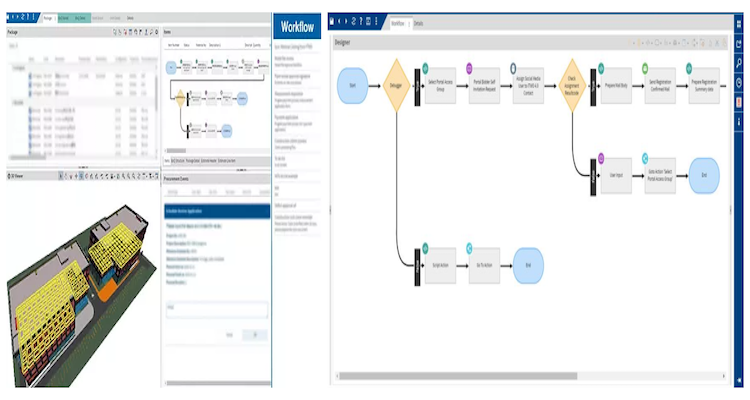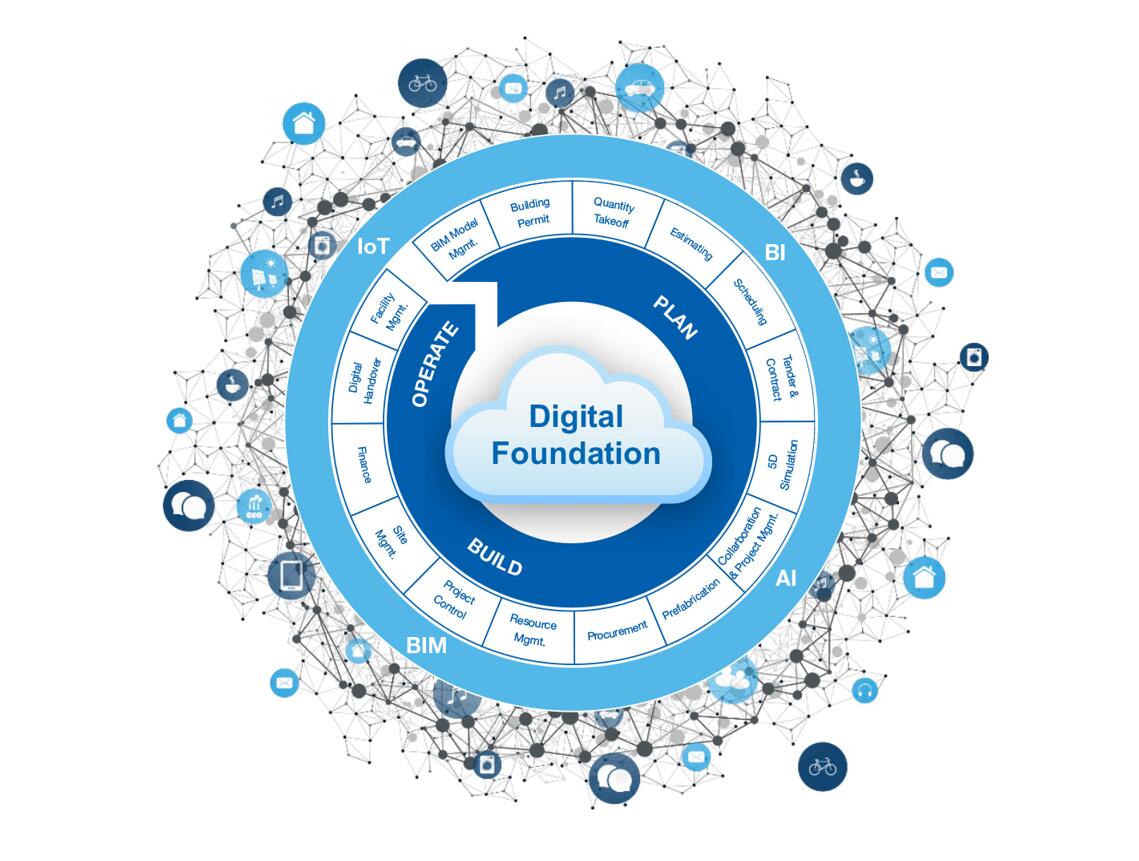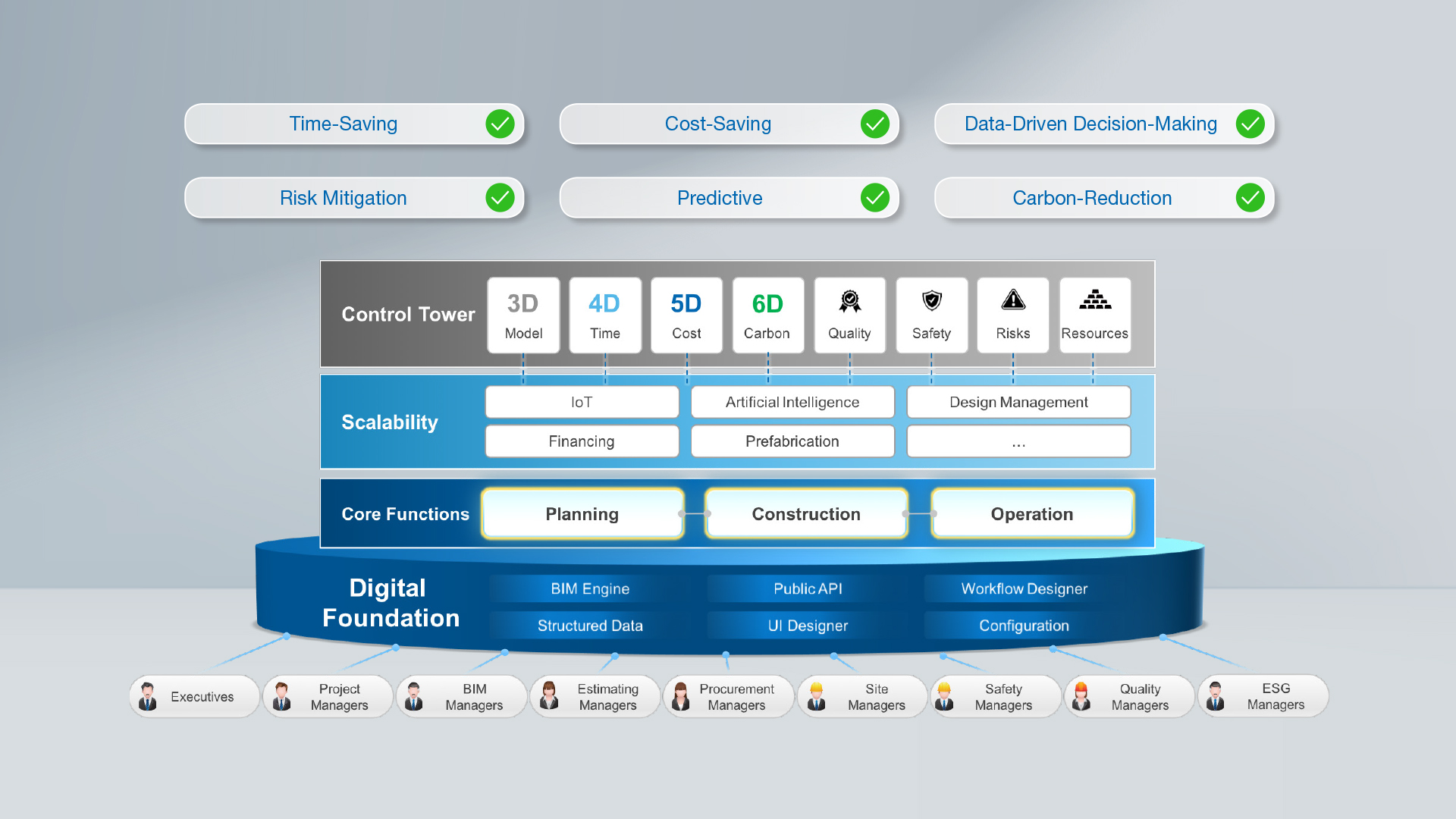Technical Area | Articles
The place to solve all your BIM doubts
How connected data drives efficient enterprise workflows
BIM Implementation Workflows

(1) The department or project level workflow management strategy
(2) The enterprise-level workflow management strategy
Companies focusing on handling pressing or short-term challenges are more likely to adopt the project-level workflow strategy, as simple tools can quickly satisfy most management needs. However, as the company or project scales, such disconnected tools will not lead to a productivity increase in the long run, but information silos and virtual walls between teams and unintegrated workflows. Organizations with a clearly defined long-term digital transformation roadmap, are more likely to adopt the enterprise-level strategy to greatly enhance intra-connectivity. Since higher standards are expected for digital collaboration, data accessibility and the standardization of workflows for long-term digitalization success, it is essential that workflows are created, connected, monitored, and adjusted as required to support an organization’s pursuit of higher performance.

MTWO Construction Cloud brings together all data, teams, and workflows in one place
As an integrated cloud platform accessible from web browsers, MTWO Construction Cloud brings all project teams together, allowing both major and minor issues in the project planning and execution stages to be dealt with efficiently and correctly. With the MTWO platform at the helm, the workflow becomes connected as well as interactive. Its flexible configuration with mainstream systems further integrates data and process workflows, extending workflows seamlessly across platforms while eliminating the manual work of data transferring. Integrated BIM workflows based on enterprise standards form the foundation for thorough planning and efficient construction management.

MTWO Workflow Designer – the soul of collaboration among project teams
The “Workflow Designer” module of the MTWO Construction Cloud is the soul of collaboration. It defines and creates workflows for different purposes, giving the frame and structure to available activities within the platform, and connecting teams, processes, and data to maximize collaboration efficiency. A workflow, for instance, can be introduced for approval, invoices can be approved or declined, principles can be applied, and structures for monitoring the contract status can be implemented. Both project-level workflow and enterprise-level workflows can be designed and managed with the MTWO platform.
The three main features of MTWO workflow designer:
MTWO Construction Cloud automates processes (i.e., procurement) through consistent workflow integrations such as authorization and approval activities. The platform links workflows to project events and are triggered automatically so that project status is always clear, helping to avoid delays and risks. When the system detects a delayed process, for example, alerts are automatically sent to relevant and designated stakeholders. Additionally, MTWO records all RFI’s (Request for Information) and automatically generates both the inquiry and the reply, meanwhile tracking the status.
(2) Connected
As an enterprise-level platform, MTWO serves as the digital foundation of an enterprise. The construction lifecycle is all connected by the data flow in the cloud. Quantity takeoff, estimation, project timeline, and procurement schedules are all connected with the BIM models. One team’s data and workflow can help other teams in the platform with real-time secure access, driving more efficient task assignment, approval, and management.
(3) Customizable
With MTWO Construction Cloud, workflows can be customized based on enterprise management standards and working methods so that teams are equipped with workflows designed specifically to how they work. Each workflow puts essential information at everyone’s fingertips for efficient task execution. The project comes alive with multiple modules interacting and sharing data, ensuring all relevant parties are kept informed throughout relevant stages of the workflow.

Benefits of MTWO enabled connected workflows:
• Increased collaboration and operational efficiency.
• Reduced redundancies and the likelihood for costly errors.
• More insight into project and business processes.
• Enhanced accountability and project quality.
• Decreased time-consuming repetitive tasks.
Overall, with an integrated cloud platform at the helm serving as the digital foundation, AEC enterprises enjoy connected master data, streamlined workflows, leaner processes, more productive teams, and better decision making.
Software
MTWO Construction Cloud RIB Software iTWOSource: https://www.mtwocloud.com/post/how-connected-data-drives-highly-efficient-enterprise-workflows











